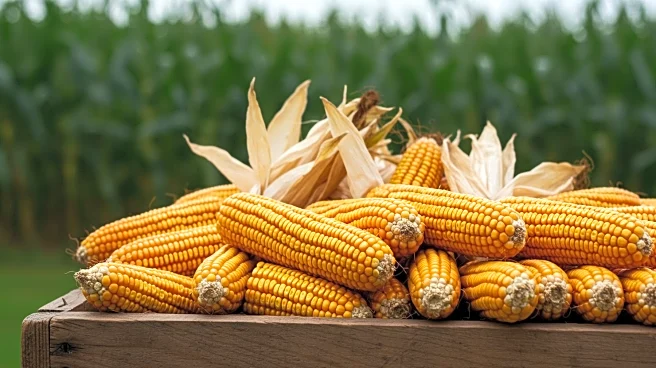What is the story about?
What's Happening?
The United States Department of Agriculture (USDA) has released its August 2025 World Agricultural Supply and Demand Estimates (WASDE) and Crop Production reports, revealing a significant increase in the forecast for 2025/2026 corn production. The USDA has projected a record corn yield of 188.8 bushels per acre, which is 7.8 bushels higher than the previous month's estimate. This increase is attributed to a 1.9-million-acre rise in harvested area and improved yield expectations. The report also indicates higher domestic use and exports, leading to an increase in ending stocks. Soybean production forecasts have been adjusted downward due to a decrease in harvested area, despite a slight increase in yield. Wheat production is expected to be slightly lower, with reduced domestic use but higher exports.
Why It's Important?
The USDA's revised projections have significant implications for the U.S. agricultural sector and global markets. The increase in corn production could lead to lower prices, benefiting consumers but potentially challenging for farmers facing increased production costs. The higher ending stocks suggest a robust supply, which may enhance U.S. competitiveness in global markets. However, the decrease in soybean production and the unchanged wheat production could impact farmers' revenue and influence planting decisions in the coming seasons. These changes also reflect broader trends in agricultural productivity and market dynamics, with potential effects on trade balances and food security.
What's Next?
The agricultural community will closely monitor the USDA's future reports for any adjustments to these projections. Farmers may need to adapt their strategies in response to changing market conditions, particularly if demand does not keep pace with increased supply. Additionally, international trade dynamics, such as export demand from key markets like China, will play a crucial role in determining the economic outcomes for U.S. farmers. The USDA's next reports will be critical in providing updated insights into these evolving conditions.
AI Generated Content
Do you find this article useful?











